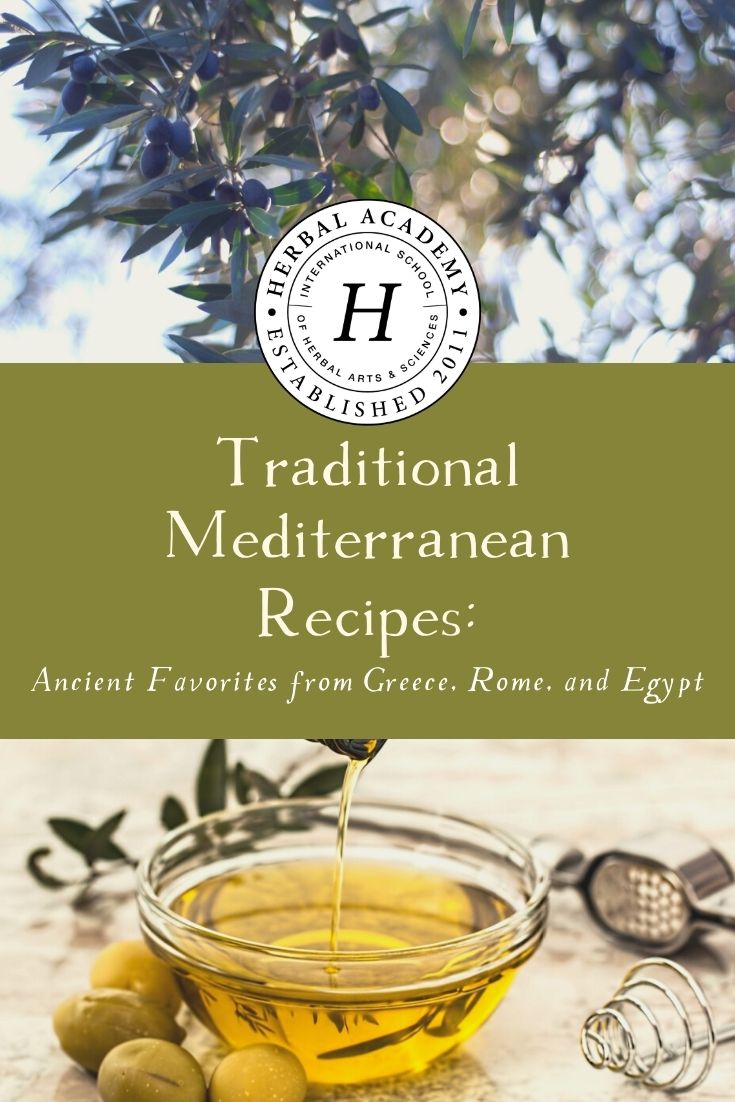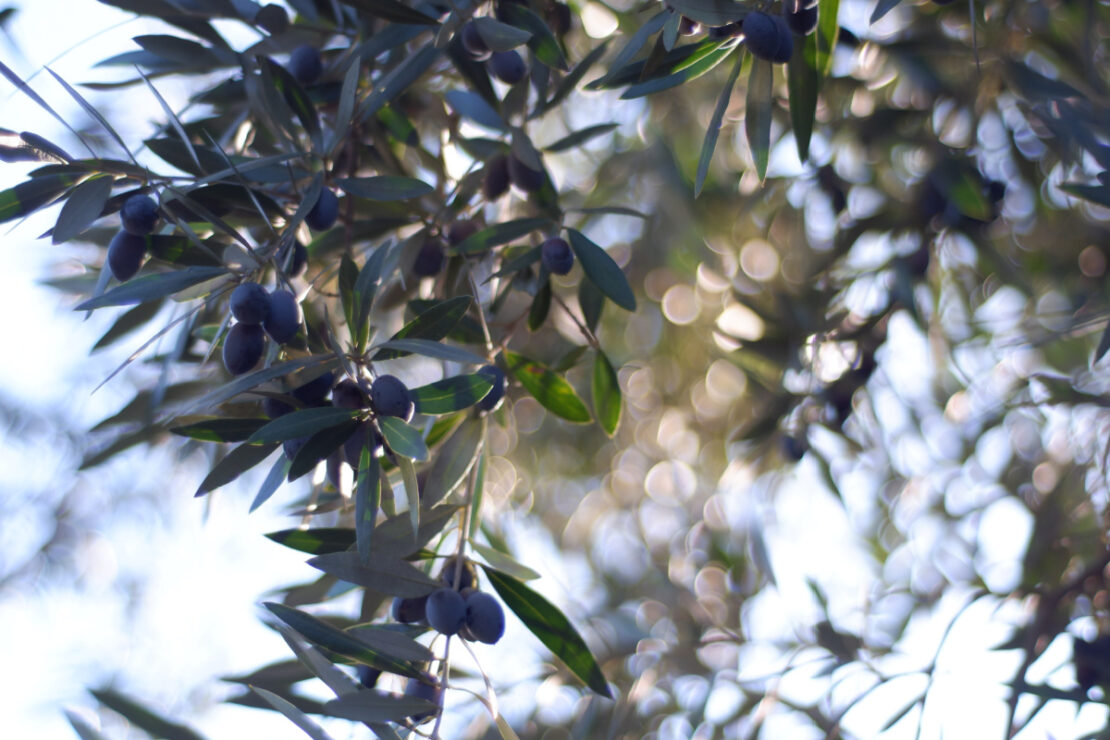
Traditional Mediterranean Recipes: Ancient Favorites from Greece, Rome, and Egypt
Cuisine can tell us so much about a civilization—both past and present. The ancient Greeks, Romans, and Egyptians, who lived more than two thousand years ago, bequeathed to us traditional Mediterranean recipes and remnants of their favored meals. By studying the eating habits of these wondrous civilizations through surviving texts, artworks, and archaeological remains, we can learn about their sacred customs, the diversity of animal and plant species in their environment, the diseases they suffered from, and the natural remedies they crafted to heal themselves.
These unique and powerful ancient civilizations frequently traded the diverse plethora of ingredients grown on their home soils with each other. Silphium (Silphion Gr.), for example, which grew abundantly only in Cyrene, an ancient Greek and Roman city now in modern Libya, was so incredibly popular across ancient Greece, Rome, and Egypt that it became extinct in the 1st century CE. Hyssop (Hyssopus officinalis) from the Greek island of Crete was special ordered by Roman chefs for a recipe that was believed to ward off the plague (Heilmeyer, 2007). Cinnamon (Cinnamomum spp.), black pepper (Piper nigrum), ginger (Zingiber officinale), and other warming spices were regularly brought by overland caravans from India and China, becoming essential flavors in Mediterranean cuisine.
Like today, diet was influenced by a person’s socio-economic status and geographic location. The combination of these three factors—nutrition, status, and environment—greatly affected health and wellbeing, especially as they were considered important influences in balancing the body’s four humours (an ancient Greek concept for maintaining health). In ancient Greece and Rome, for example, wealthy city-dwellers enjoyed lavish feasts with imported fruits, vegetables, and spices, as well as meat and fish. These lavish gatherings lasted for hours with multiple courses and musical entertainment, and socialites often enjoyed these feasts lounging semi-reclined. The working class and enslaved people, in contrast, ate simple meals with recipes mainly consisting of grains, including wheat, barley, or millet. Throughout the ancient Mediterranean world, meat was generally eaten on feast days and for celebrations across socio-economic classes.
Over the centuries, trade, travel, and warfare greatly influenced local culinary customs. The ancient civilizations of Greece, Rome, and Egypt each had their own culinary practices worth exploring in more detail. As we will see, no culture stands alone in its quest for satisfying the sense of taste and gustatory fulfillment.
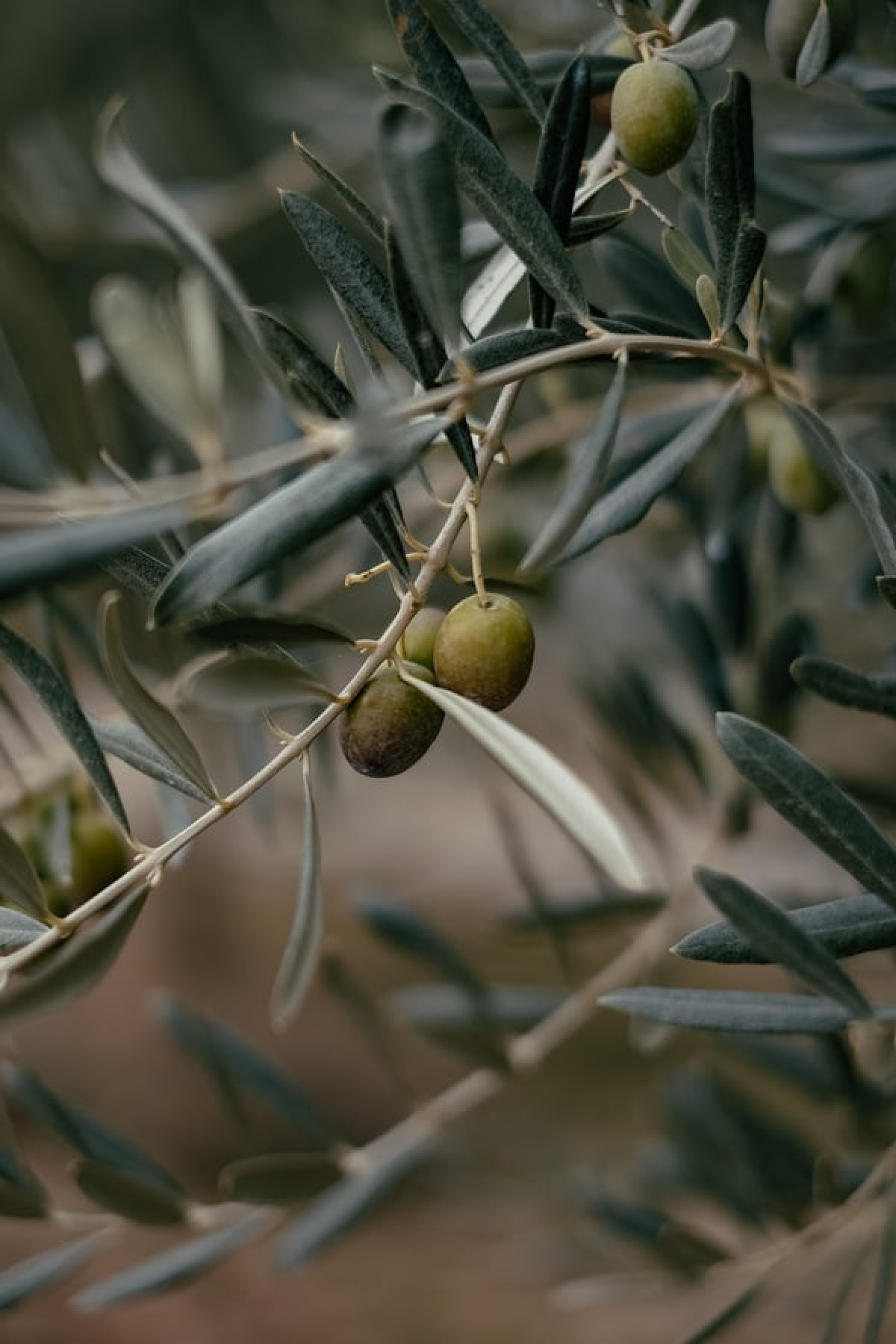
Ancient Greece
The earliest written evidence of the use of spices in ancient Greece is found on Bronze Age tablets dating from the 14th and 13th centuries BCE, which list coriander (Coriandrum sativum L)., safflower (Carthamus tinctorius), and saffron (Crocus sativus) (Arnott, 1996). The most common and locally grown food staples included olives, cereals (wheat and barley), grapes, and legumes. As the Greeks were sea-faring peoples, trade was extensive throughout the region; amphora, large jugs used for transport and storage, have been found to have remnants of legumes, walnuts, ginger (Zingiber officinale), mint (Mentha), rosemary (Rosmarinus officinalis), thyme (Thymus vulgaris), oregano (Origanum vulgare), and sage (Salvia officinalis). Such findings indicate that trade was quite extensive, as some of these botanicals are not native to Greece (Foley, et al., 2012).
In addition to archaeological evidence, we can get a strong sense of the varied flavors and textures of the times through ancient food writers. Archestratus (4th century BCE), a Sicilian Greek from either Syracuse or Gela, had traveled across the Mediterranean and compiled local recipes into a humorous poem called Hedypatheia. In his poem, which translates to “Life of Luxury,” Archestratus offers his recommendations on where to find the best foods and reveals “the secrets of the ancient Greek cuisine,” akin to a juicy tabloid (Tsolakidou, 2013, para. 1). “Going far beyond practical advice for the kitchen, his book was a provocation, written as a poem, that urged the reader to ignore the teachings of moderation in Homer and Plato and lead a life of unrestrained luxury” (The J. Paul Getty Museum, 2013, para. 2).
This moderation, however, was well steeped in Greek cuisine, which was known for its frugality and simplicity. Many ancient Greeks practiced vegetarianism, and it was not until the Roman empire expanded over the Greek continent between (27 BCE-1453 CE) that the well-known lavishness of the Romans began to change the traditional Greek culinary landscape.
Generally, breakfast, or akratismós (ἀκρατισμός), in ancient Greece consisted of either hard barley bread dipped in diluted wine paired with figs or olives, or a type of fried dough made with wheat flour, olive oil, honey, and curdled milk. The mid-day meal, called áriston (ἄριστον), was a light meal of bread and olive oil, sometimes with fresh or dried fruit. Snacks eaten before dinner were called hespérisma (ἑσπέρισμα). Dinner or deīpnon (δεῖπνον) was the biggest meal of the day and included bread, local or home-grown vegetables, eggs, fish, cheese, or legumes (Tsolakidou, 2013). Dessert was relatively simple, consisting of honey drizzled on cheese, figs, or olives (Kotsiris, 2020). Wine was enjoyed diluted at all meals by men only, as women were forbidden to drink it. Men and women ate their meals separately, and enslaved people ate after everybody else. Food was handled by hand, as eating utensils did not exist.
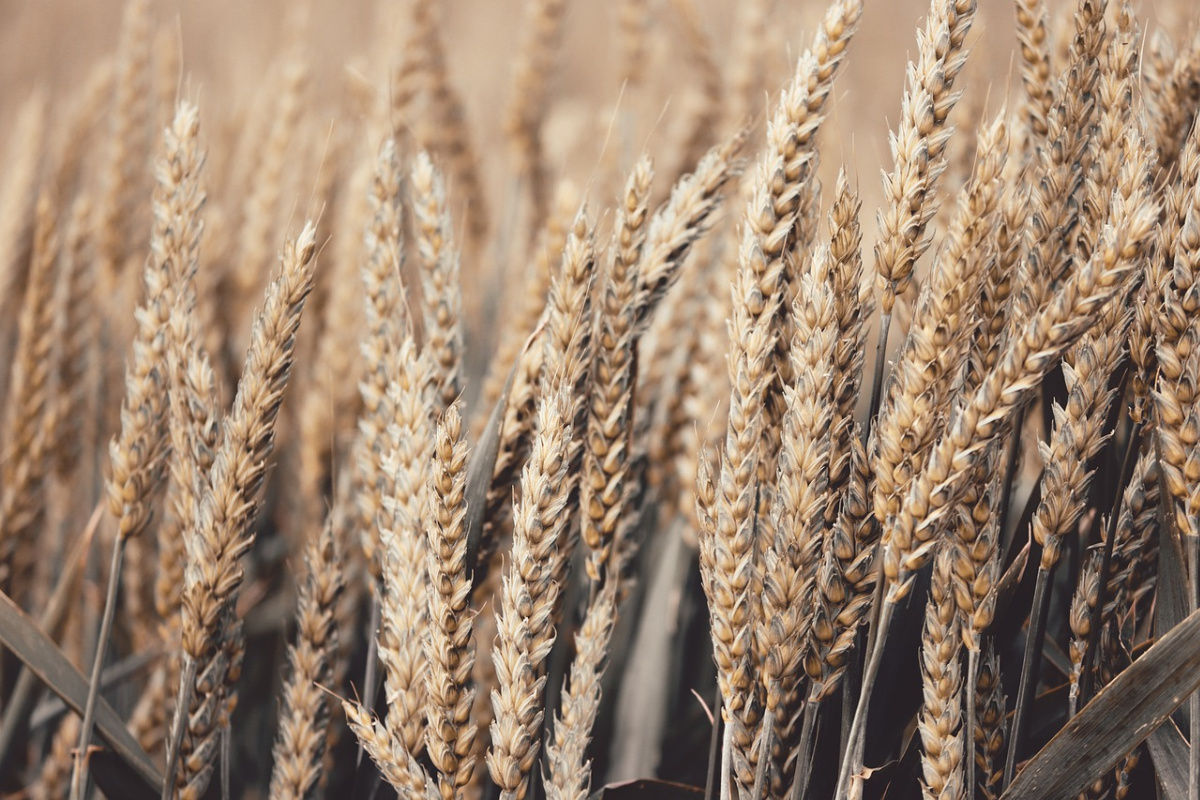
Ancient Rome
Wheat, legumes, olives, figs, pears, celery, garlic, cabbage, broccoli, and carrots were staples in ancient Rome. Wealthy Romans enjoyed far more variety and delicacies compared to other socio-economic groups. As a prime (and perhaps surprising!) example, breeding and eating dormice, the edible dormouse (a species between a mouse and a squirrel), was considered a status symbol. Their gardens were also much larger and more extensive than their less-wealthy counterparts, including adornments and non-edible plants. A general replica of an ancient Roman garden is maintained at the Getty Villa in California.
As the ancient Roman empire changed over the centuries, so did culinary traditions. Towards the first century CE, three-course dinner meals became common. Breakfast in ancient Rome was called ientaculum and could include a wheat pancake of dates and honey, or bread, cheese, and fruit. For the mid-day meal, prandium (called cena in earlier antiquity), the ancient Romans enjoyed a light meal of fish or eggs with vegetables, bread dipped in wine, fresh or dried fruit, or cheese (Empire Rome, n.d.). Dinner, cena, called vesperna in early antiquity, was the main meal of the day. An early Roman staple dish was called puls, a type of porridge made with emmer wheat, salt, vegetables, olive oil, and water. The wealthy, whose dinners could include multiple courses, also feasted on meat or fish, eggs, cheese, olives, fruits, and vegetables. While sugar was not yet available among these ancient civilizations, honey was generously enjoyed at the end of a meal drizzled on dried or fresh fruits. For dessert, the Romans also ate foods we may not consider satisfying to our sweet tooth, such as oysters, shellfish, chickpeas, and olives, which were believed to improve digestion after a heavy meal (Empire Rome, n.d.).
There are a variety of recipes from ancient Rome that portray the Roman’s notorious lavish lifestyle. De Re Coquinaria of Apicius, a celebrated Roman cookbook of the late 4th or early 5th centuries BCE, is considered the oldest surviving cookbook in all of antiquity. The book includes recipes with a variety of local and imported ingredients and provides a plethora of information on how ancient Romans enjoyed their food. Lavishly, to say the least!
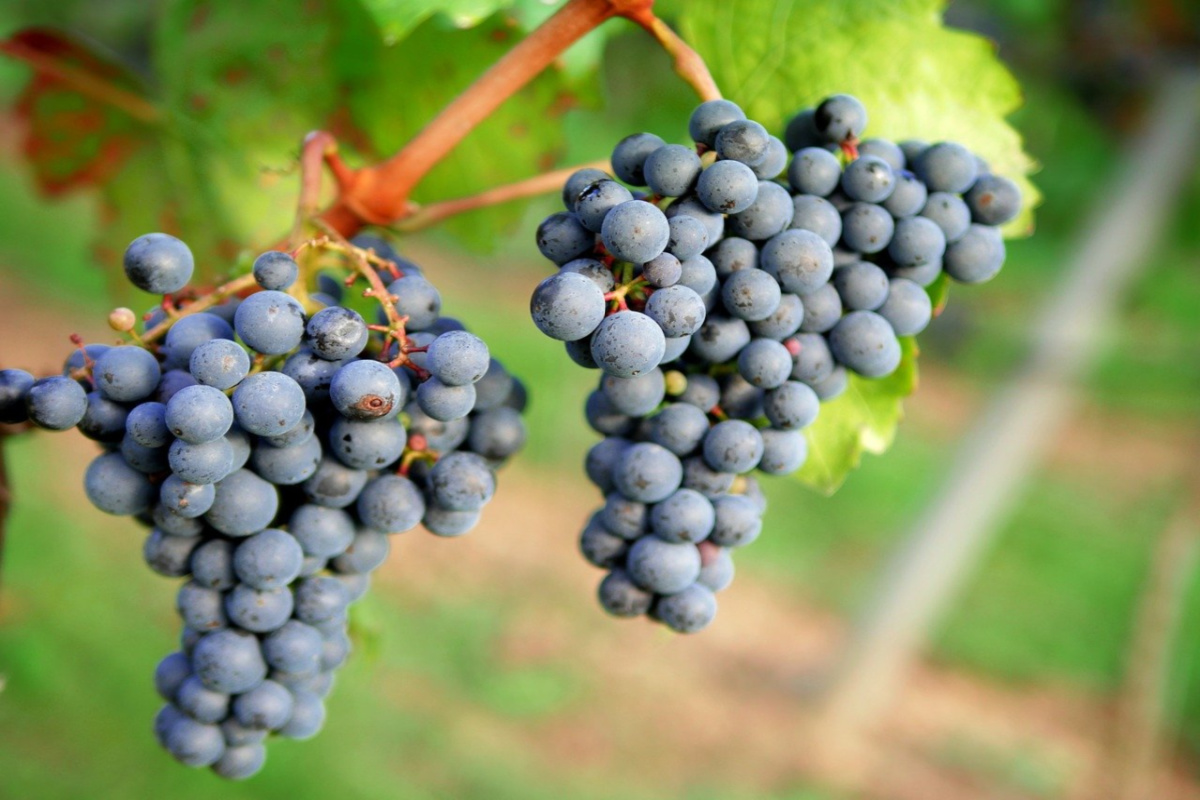
Ancient Egypt
Because of the rich and fertile soil of the Nile delta, a variety of fruits and vegetables were available to all social classes in ancient Egypt: figs, grapes, garlic, scallions, celery, radish, cucumber, and lettuce, which was sacred to the fertility god, Min. Overall, the ancient Egyptians, both poor and wealthy, enjoyed a far more balanced diet than the ancient Greeks and Romans. Similar to counterparts in Greece and Rome, the ancient Egyptians did not eat a lot of meat, except for on feast days. The nobility were an exception. Common protein sources included legumes (lentils and chickpeas), eggs, and cheese. Dates were the most common fruit, and were eaten fresh, dried, baked, or soaked in beer gruel. According to the ancient Greek historian Herodotus, the pyramids were constructed by workers whose staple foods were garlic, radishes, and onions (Herodotus, ca. 425 BCE/1998).
A hard bread made from emmer wheat or barley and a nutritious beer gruel—both made from the same yeast—was a basis for all meals across social classes. The bread was made with water or milk, salt, and spices, including cumin (Cuminum cyminum) , anise (Pimpinella anisum L.), cloves (Syzygium aromaticum), or cinnamon (Cinnamomum spp.). Perhaps in acts of whimsy or religion, the dough was shaped not only round, but also in the shapes of cows or people. For breakfast, this bread was often paired with green scallions and for dessert, it was sweetened with honey or dates. A dessert recipe found illustrated in a tomb includes dates, tiger nut (Cyperus esculentus) flour, and honey (see below for recipe!).
Cereal crops provided much more than just nutrition; they were also used as a measure of wealth, as a form of payment, and even in mathematical calculations. “Mathematical problems were phrased in terms of the conversion of grain into bread and beer, which formed the basis of wages, everyday diet, and funerary offerings. Bread and beer also featured prominently in the practice of medicine, with a significant number of the surviving remedies in the medical papyri including one or more of these in their formulation” (Metcalf, 2016, para. 1).
Due to increased trade, travel, and invasions across the Mediterranean over the centuries, Egyptian recipes began to incorporate new flavors. Fruits, such as pear, quince, plum, and peach became popular imports, as well as nuts, including filberts, walnuts, pine nuts, and pistachios, introduced in the Graeco-Roman period (Ikram, 2001). When Alexander the Great founded the trading port of Alexandria in the 4th century BCE, the city would become a major metropolis, where for centuries later, “western spice traders met with African and Asian spice merchants” (Mundigler, n.d., para. 2).
While no recipe book from ancient Egypt has been found that we can refer to, there are an abundance of painted illustrations and plant remains in tombs that archeologists have been able to analyze to weave together this image of ancient Egyptian culinary favorites.
Below is a summary of common foods eaten in ancient Greece, Rome, and Egypt. While eating habits shift on the personal and community level over time, these foods can help illustrate both the bounty of the land and the nutritional health of a civilization.
| Breakfast | Lunch | Dinner | Dessert | Beverage | |
| Ancient Greece | Hard barley bread dipped in diluted wine, with figs or olives
Fried dough made with wheat flour, olive oil, honey, and curdled milk |
Hard bread and olive oil with fresh or dried fruit | Hard bread, vegetables, eggs, fish, cheese, or legumes | Honey drizzled on cheese, figs, or olives | Diluted wine |
| Ancient Rome | Wheat pancake with dates and honey
Hard bread, cheese, and fruit |
Fish or eggs with vegetables
Hard bread dipped in wine Fresh or dried fruit and cheese |
Porridge with olive oil and vegetables
Eggs, vegetables, cheese, olives, meat, or fish |
Honey with nuts or fruit
Snails, oysters, shellfish, chickpeas, or olives |
Diluted wine |
| Ancient Egypt | Hard bread with green scallions | Hard bread, legumes, eggs, cheese, fruits, and vegetables | Hard bread, legumes, eggs, cheese, fruits, vegetables, and meat or fish | Hard bread sweetened with honey or dates
Cakes made with tiger nut flour, dates, and honey |
Beer gruel
Red wine |
Traditional Mediterranean Recipes
The flavors of the ancient Mediterranean world were spectacularly varied and creatively blended. For the culinary explorer interested in a taste of ancient flavors, here are several recipes that can ignite the imagination and (hopefully) please even modern taste buds.
Appetizers
Eggs were a popular appetizer in ancient Rome and there were many recipes to whet the palate for the main meal. This recipe is adapted from De re coquinaria of Apicius (7.19.3) in Pantke (1993).
8 semi soft-boiled eggs Adopted by the Romans from the Greeks, this dip was written about by the Latin writer Cato in De Agricultura (160 BCE/1934, 119) and was frequently paired with cheese. Recipe adapted from Not Just Dormice – Food for Thought (2014) and Romans in Britain (n.d.).
6 ounces mixed whole black and green olives, pitted Deriving from the Latin word for grinding bowl, mortarium, this recipe is a modern-day pesto with more complex flavors. The Roman poet Virgil had even dedicated a poem to this exquisite sauce! Recipe adapted from Not Just Dormice – Food for Thought (2014).
1 small head of lettuce, chopped Note: This recipe was converted from grams. The amount of olive oil and vinegar was not included in the original recipe, so estimate according to the desired consistency. A popular condiment among all social classes in both Greece and Rome. This fermented sauce, adapted from Giacosa (n.d.), was made with fish innards and a variety of herbs and spices, including celery, coriander, mint, oregano, dill, and fennel, fermented in salt water. It was so popular that ancient garum factories were unearthed in widespread locations, including in present-day Portugal, France, and Morocco, from where the sauce would be exported. A discovery in Pompeii in 2008 found many storage vessels of garum, and the find helped more accurately date the eruption of Mt. Vesuvius (Killgrove, 2019)!
“Accept this exquisite garum, a precious gift made with the first blood spilled from a living mackerel,” claimed a Roman poet (Giacosa, n.d., para. 1).
Quart of grape juice This is a popular ancient Egyptian fava bean recipe that is still prepared today in parts of the Middle East. This recipe is adapted from Hill (2016).
1 pound fava beans, soaked overnight and drained Named after a prominent Roman man named Fronto, this recipe was included in De re coquinaria of Apicius (9.246): “A half-cooked chicken marinaded in a pickle of broth, mixed with oil, to which is added a bunch of dill, leeks, satury [known as satureia hortensis in Latin, it was a white flower in the Lamiaceae family growing in southern Europe and commonly used in cooking].and green coriander. Finish it in this broth. When done, take the chicken out, dress it nicely on a dish, pour over the sauce, colored with reduced must [fruit juice containing skins, seeds, and stems of the fruit], sprinkle with pepper, and serve” (Hill, 1936). The recipe below is adapted from GODGIFU (n.d.) and Pankte (1993).
1 whole chicken (3 lbs) Transfer chicken and all juices to a baking dish (if not using an oven-safe frying pan). Rub the remaining seasoning mixture on the chicken. Bake at 425°F (220°C) for 1 hour, occasionally basting with the juices. The chicken will be considerably browned. Generously drizzle fig syrup on the serving platter and place chicken on it. Season with salt and pepper.
This was a sacred cake often given as an offering to the Roman gods. The recipe was written about by Cato (De Agricultura, 160 BCE/1934, 75) and the Roman poet Ovid (Not Just Dormice – Food for Thought, 2014).
1 cup spelt flour This recipe is adapted from a scene illustrated on the wall of the ancient Egyptian tomb of Rekhmire from the 18th Dynasty (1,550-1,292 BCE) (Eng, 2020).
1 cup of tiger nuts (Cyperus esculentus), raw An ancient Roman wine flavored with spices and sweetened with honey, similar to modern mulled wine, adapted from Not Just Dormice – Food for Thought (2014). Yield:4 cups.
3 cups lukewarm water Meaning “to stir,” this was a sacred beverage of ancient Greece, particularly during the highly secretive Eleusinian Mysteries to honor Demeter, the goddess of the harvest. The drink was a simple blend of barley, mint or pennyroyal, and honey. While the original drink included ergot, a naturally occurring psychotropic fungus that grows on barley, wheat, and rye (Dean, 2013), this modern version is adapted from Tokev (n.d.) without the effect but just as refreshing.
1 ½ cups ricotta cheese While the ancient Mediterranean region was more bountiful than we can imagine today, given the impact of human consumption over the past thousands of years, we can perhaps imagine the bounty of the dinner table as we feast our eyes and taste buds on the timeless flavors of mother nature. The ancient Greeks, Romans, and Egyptians were incredibly creative with the resources that were available to them and explored flavors that some might find unappetizing in today’s modern world. However, there still remains this human curiosity to taste the flavors of the world and take part in the culinary experience thousands of years old. Reviving ancient recipes can help us do exactly this.
For more posts on the ancient society, see: REFERENCES
Arnott, R. (1996). Healing and medicine in the Aegean Bronze age. Journal of the Royal Society of Medicine, 89, 265-70.
Dean, S. (2013). The etymology of the word mint. Retrieved from https://www.bonappetit.com/test-kitchen/ingredients/article/the-etymology-of-the-word-mint
Cato. (1934). De agricultura. (W. D. Hooper and H. B. Ash, Trans.) Loeb Classic Library. (Original work published ca. 160 BCE) Retrieved from http://penelope.uchicago.edu/Thayer/e/roman/texts/cato/de_agricultura/introduction*.html
Empire Rome. (n.d.) Culture: Meals in ancient Rome. Retrieved from http://www.empirerome.com/wordpress/?page_id=599
Eng, J. (2020). Recreate the ancient Egyptian recipes painted on tomb walls. Retrieved from https://www.atlasobscura.com/articles/ancient-egyptian-recipes
Foley, B., Hansson, M., Kourkoumelis, D., & Theodoulou, T. (2012). Aspects of ancient Greek trade re-evaluated with amphora DNA evidence. Journal of Archaeological Science, 39(2), 389-398. https://doi.org/10.1016/j.jas.2011.09.025
Giacosa, I. (n.d.) Garum fish sauce. Retrieved from https://www.pbs.org/wgbh/nova/lostempires/roman/garum.html
GODGIFU, (n.d.) Pullum frontonianum (Apicus Chicken). Retrieved from https://www.allrecipes.com/recipe/8638/pullum-frontonianum-apicus-chicken/
Heilmeyer, M. (2007). Ancient Herbs. Getty Publications.
Herodotus. (1998). The histories (R. Waterfield & C. Dewald, Trans.). Oxford; New York: Oxford University Press. (Original work published ca. 425 BCE).
Hill, J. (2016). Recipes. Retrieved from https://ancientegyptonline.co.uk/recipes/
Hill, W. (1936). De re coquinaria of Apicius. Retrieved from https://penelope.uchicago.edu/Thayer/E/Roman/Texts/Apicius/6*.html#IX
Ikram, S. (2001). Diet. Oxford University Press. Retrieved from https://www.academia.edu/3265947/2001_Diet_The_Oxford_Encyclopedia_of_Ancient_Egypt_New_York_Oxford_University_Press_390_395#:~:text=The%20two%20staples%20of%20the,eggs%2C%20honey%20and%20other%20sweets
Killgrove, C. (2019). Vat of ancient fish sauce may confirm date that Pompeii was destroyed. https://www.forbes.com/sites/kristinakillgrove/2019/06/03/vat-of-ancient-fish-sauce-may-confirm-date-that-pompeii-was-destroyed/?sh=95a1ec97b221
Kotsiris, K. (2020). Eating like an ancient Greek. Retrieved from https://www.thespruceeats.com/eating-like-an-ancient-greek-1705715
Metcalf, R. (2016). Bread and beer in ancient Egyptian medicine. Retrieved from https://www.manchesterhive.com/view/9781784997502/9781784997502.00025.xml#
Mundigler, C. (n.d.) The ancient spice trade, part III: Greece and Rome. Retrieved from https://uwlabyrinth.uwaterloo.ca/labyrinth_archives/the_ancient_spice_trade_iii.pdf
Not Just Dormice – Food for Thought. (2014). ‘Trimalchio’s Kitchen’ – pop-up restaurant at Royal Holloway – 1st December 2014. Retrieved from https://notjustdormice.wordpress.com/2014/12/02/trimalchios-kitchen-pop-up-restaurant-at-royal-holloway-1st-december-2014/
Pantke, M. (1993). Antique Roman dishes. Retrieved from https://www.carroll.edu/sites/default/files/content/academics/philosophy/msmillie/foodilap/antiqueromandishes.htm#1
Romans in Britain. (n.d.) Recipe for Epityrum Varium (Olives with herbs). Retrieved from https://www.romanobritain.org/2-arl_food/arl_roman_recipes-olives_herbs.php
The J. Paul Getty Museum. (2013). At the Sicilian table: Culinary pleasures of ancient Sicily. Retrieved from https://www.getty.edu/museum/programs/lectures/at_the_sicilian_table.html
Tokev, A. (n.d.) Kykeon – The ancient smoothie. Retrieved from https://www.chefspencil.com/recipe/kykeon-the-ancient-smoothie/
Tsolakidou, S. (2013). Archestratus and the secrets of ancient Greek gastronomy. Retrieved from https://greece.greekreporter.com/2013/03/03/archestratus-and-the-secrets-of-ancient-greek-gastronomy/
Hard-Boiled Eggs (Latin: in ovis apalis)
3 tablespoons pine nuts, soaked for 3-4 hours in vinegar
1 tablespoon honey
1 celery stalk, chopped
White wine vinegar, to soak and splash
Black pepper (Piper nigrum)
Salt, to taste
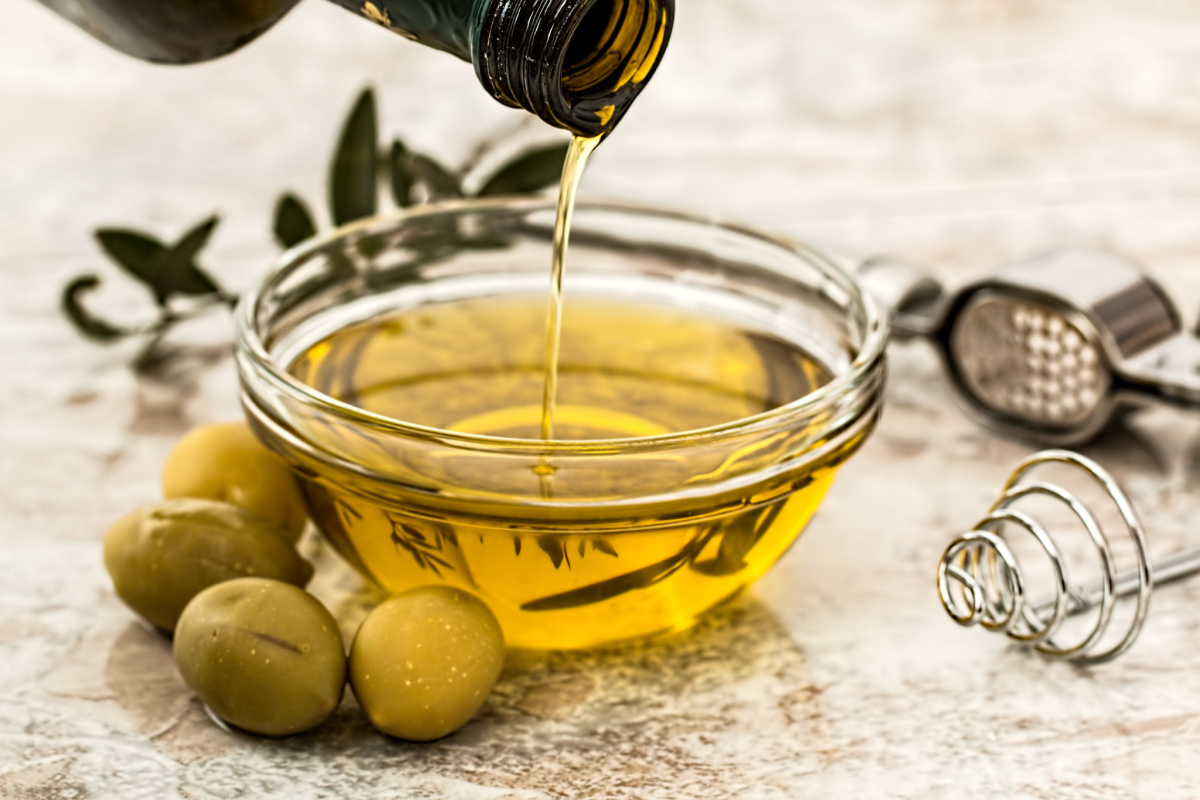
Marinated Olives with Herbs (Latin: epityrum varium)
2 tablespoons high-quality olive oil (Greek, Italian, or Spanish, preferably)
3 tablespoons white wine vinegar
1 teaspoon ground cumin (Cuminum cyminum)
½ teaspoon ground fennel (Foeniculum vulgare) seeds
Bunch of fresh coriander (Coriandrum sativum L.) leaves, finely chopped
3 mint (Mentha) leaves, finely chopped
Sprig of rue (Ruta graveolens), finely chopped (or fresh fennel leaves)
Sauces
Moretum (Latin: moretum)
1 small leek or celery stalk, chopped
1 cup ricotta cheese
8 teaspoon fresh mint (Mentha)
4 tablespoon fresh parsley (Petroselinum crispum)
4 tablespoon coriander seeds (Coriandrum sativum L.)
1 sprig fresh thyme (Thymus vulgaris)
Olive oil, for desired consistency
A splash of vinegar
Pepper, to taste (Piper nigrum)
Garum (ancient Greek: γάρος and Latin: garum)
2 tablespoons anchovy paste
Pinch of oregano (Origanum vulgare)
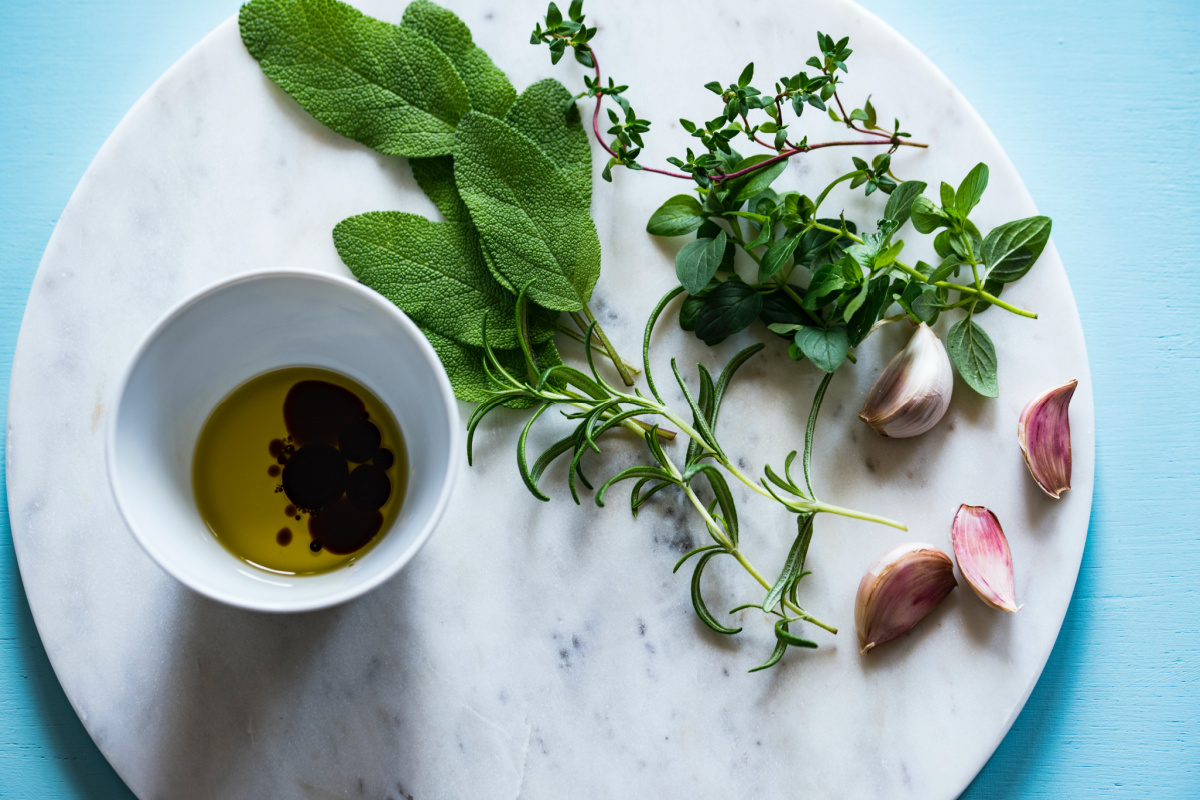
Vegetarian Dish
Ta’amia
2 large onions, finely chopped
2 cloves garlic (Allium sativum), finely chopped
1-2 teaspoon ground coriander (Coriandrum sativum L.)
1-2 teaspoon cumin (Cuminum cyminum)
1 teaspoon cayenne pepper (Capsicum)
½ teaspoon baking powder
¼ cup minced parsley (Petroselinum crispum)
A pinch of salt
Black pepper (Piper nigrum), to taste
Sesame seeds to coat the cakes
Olive oil for frying
Meat Dish
Chicken a la Fronto (Latin: pullum frontonianum)
1 leek, bulb only, chopped
1 cup red wine
½ cup olive oil
⅓ cup dried rose petals
1 tsp salt
¼ cup fresh dill (Anethum graveolens), chopped
2 tbsp ground coriander seed (Coriandrum sativum L.)
½ tsp black pepper (Piper nigrum)
2 tbsp olive oil
½ cup syrup from canned figs
Salt, to taste
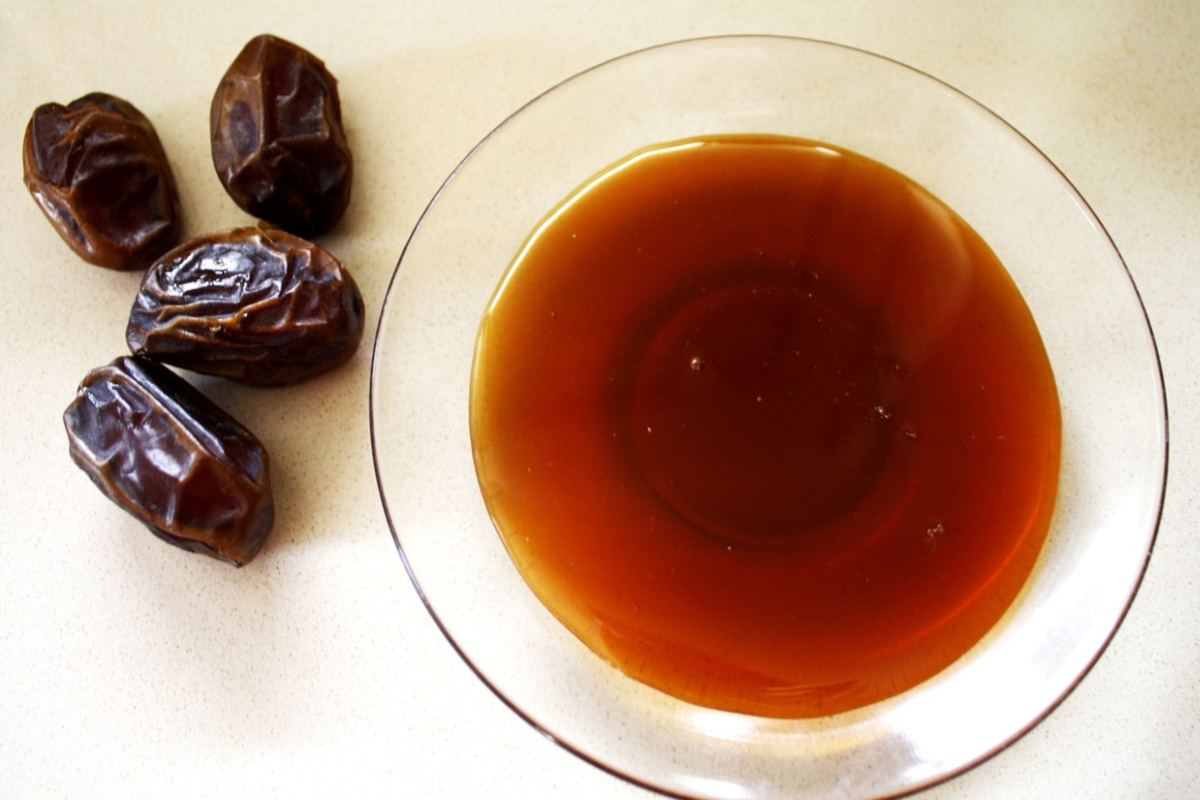
Dessert
Libum (Latin: libum)
8 oz ricotta cheese
1 beaten egg
½ cup clear honey
Bay leaves (Laurus nobilis)
Rekhmire’s Tiger Nut Cones
½ cup hot water
¼ cup of honey
¼ cup of olive oil
½ cup dates, chopped
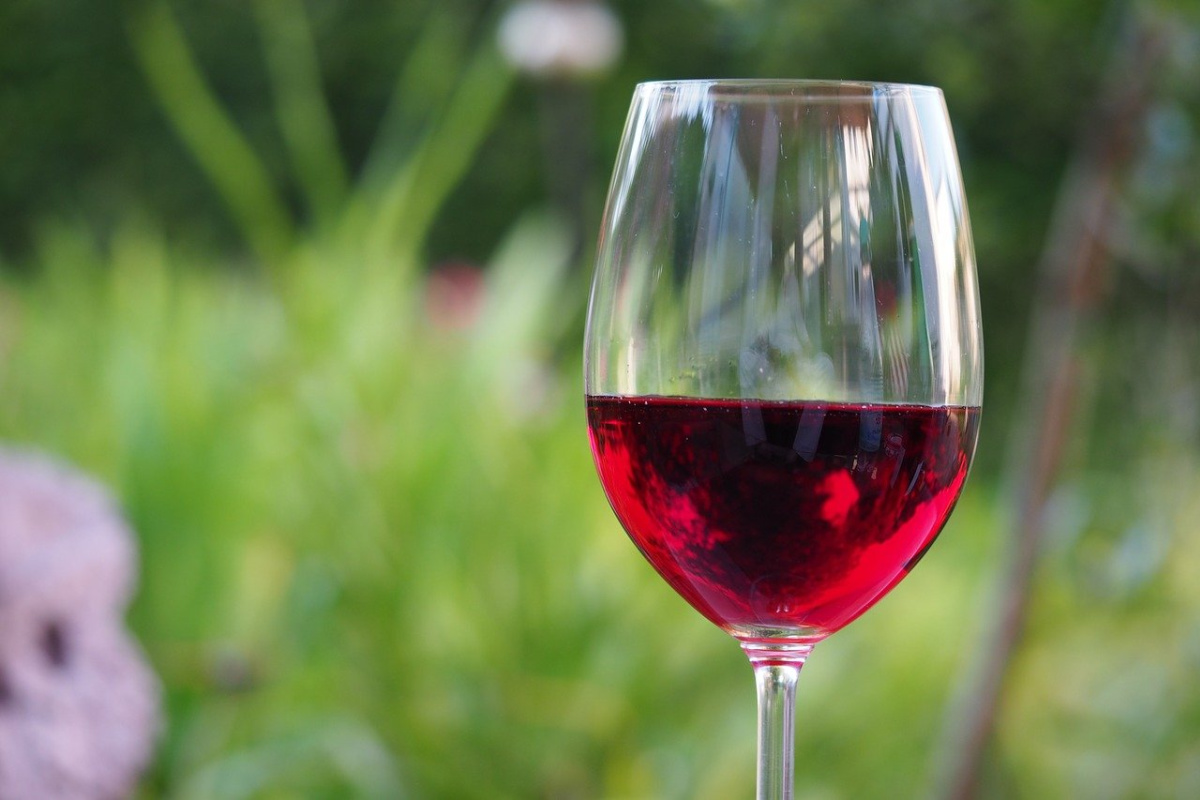
Beverages
Mulsum (Latin: mulsum)
1 cup red wine
4 tbsp honey
1 cinnamon stick (Cinnamomum spp.)
1 tsp whole cloves (Syzygium aromaticum)
Kykeon (ancient Greek: κυκεών, kykeȏn)
½ cup spelt flour
1 egg
2 ½ tbsp honey
1 cinnamon stick (Cinnamomum spp.)
Fresh lemon balm (Melissa officinalis), roughly chopped
Water
Conclusion
De Materia Medica: The Ancient Text that Changed the World
The Four Humours of Ancient Greek Medicine: Ancient Thought in Modern Practice
